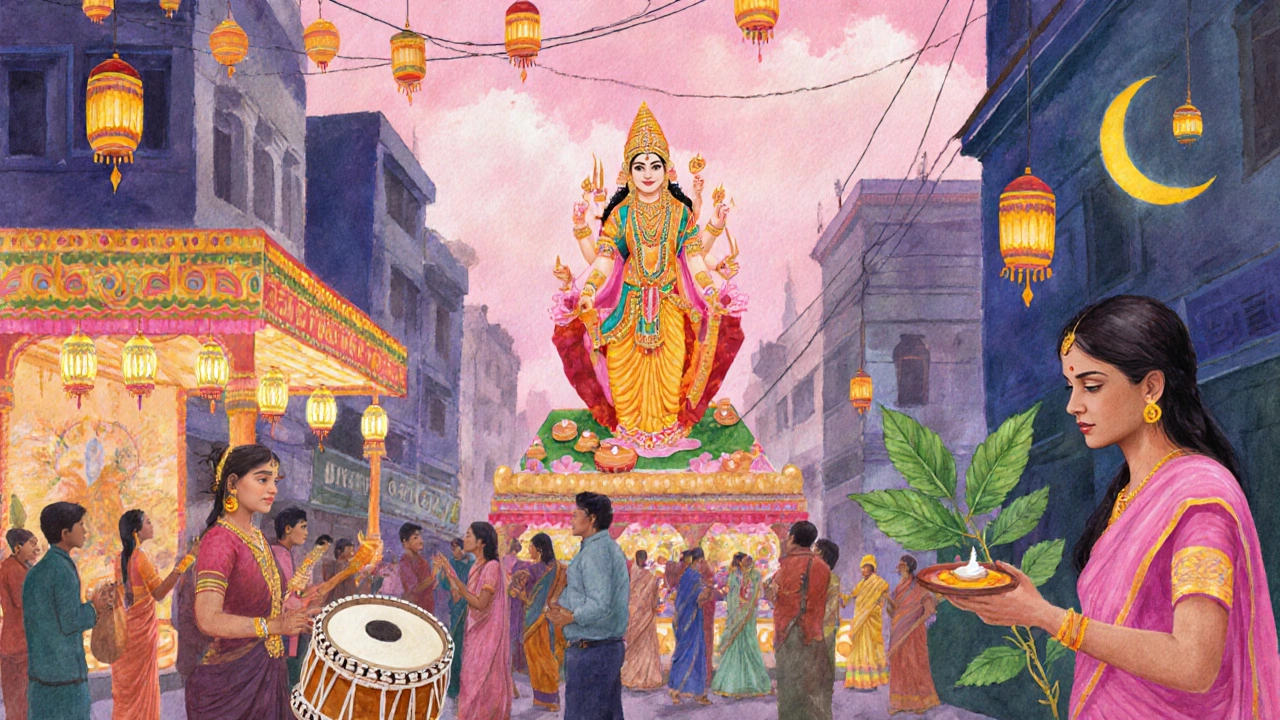
Bengali Festivals: What Do Bengali People Celebrate?
Discover the key Bengali festivals-Durga Puja, Poila Boishakh, Saraswati Puja, and more-plus dates, customs, foods, and tips for visitors.
When people talk about Poila Boishakh, the Bengali New Year celebrated on the first day of the month of Boishakh in the Bengali calendar. Also known as Pohela Boishakh, it’s a vibrant, food-filled, music-driven day that kicks off the new year for millions in West Bengal and Bangladesh. But if you’re from Tamil Nadu, you might wonder—why does this matter to me? After all, Tamils celebrate Puthandu in mid-April, the Tamil New Year, with mango leaves, kolams, and sweet pongal. Both are harvest festivals tied to the solar calendar. Both are about renewal, family, and fresh starts. But they’re not the same. And that’s the point.
Poila Boishakh isn’t just a date on the calendar—it’s a cultural fingerprint. It’s the sound of dhak drums in Kolkata markets, the smell of pitha and ilish fish, the sight of people in white and red clothes walking to temples. It’s a day when shopkeepers open new account books called halkhata, hoping for prosperity. Meanwhile, in Tamil homes, the kollam (almanac) is read aloud, and families eat sweet rice to symbolize a sweet year ahead. Both traditions share the same roots: ancient agrarian cycles, lunar-solar alignments, and the belief that how you begin a year shapes how it unfolds. But the rituals? They’re shaped by local language, local gods, and local food. That’s the beauty of India’s diversity. One country. Dozens of New Years. Each with its own rhythm.
You won’t find Poila Boishakh celebrated in Madurai the same way it’s done in Dhaka. But if you look deeper, you’ll see the same heartbeat: families gathering, elders blessing the young, new clothes, new beginnings. The same values—respect, gratitude, hope—are carried in different ways. And that’s why stories about Diwali, the Hindu festival of lights celebrated across India with regional variations, or Navratri, a nine-night festival honoring the divine feminine, with different rituals in the north versus the south, matter. They’re not just holidays. They’re living maps of identity. When you read about how Tamils celebrate Diwali alongside Karthigai Deepam, or how Bengalis honor Saraswati during Poila Boishakh, you’re not just learning customs—you’re seeing how culture bends, blends, and stays true to itself.
What follows is a collection of articles that explore these kinds of connections—how one region’s tradition echoes, contrasts, or quietly influences another. You’ll find pieces on Tamil folklore, Indian classical music differences, food taboos, and how festivals like Navratri stretch across 15 days. Some will surprise you. Others will feel familiar. All of them tie back to the same truth: India’s cultural richness isn’t in the big, loud celebrations. It’s in the quiet, daily ways people honor their past—and make it their own.

Discover the key Bengali festivals-Durga Puja, Poila Boishakh, Saraswati Puja, and more-plus dates, customs, foods, and tips for visitors.